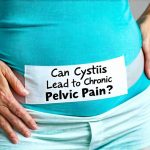Interstitial Cystitis (IC) is a chronic bladder condition characterized by frequent and urgent needs to urinate, as well as persistent pelvic pain. Unlike a simple urinary tract infection, IC isn’t typically resolved with antibiotics, leading many sufferers on a frustrating journey of diagnosis and management. The unpredictable nature of the illness—periods of intense flare-ups followed by relative calm—can significantly impact quality of life, making daily activities challenging and fostering anxiety about potential symptoms. It’s important to understand that IC is complex; its causes aren’t fully understood, and treatment approaches often need to be tailored to individual needs and symptom presentation.
The question of whether interstitial cystitis goes into remission is a deeply hopeful one for those living with the condition. While there isn’t a ‘cure’ for IC in the traditional sense, many individuals do experience prolonged periods where symptoms are significantly reduced or even absent—what can be considered remission. However, this remission isn’t guaranteed and varies greatly from person to person. Some may experience years of symptom-free living, while others might see intermittent remissions punctuated by frequent flare-ups. Understanding the factors influencing remission, exploring available treatment options, and adopting a proactive self-management approach are crucial for improving long-term outcomes and navigating life with IC.
Understanding Remission in IC
Remission in IC isn’t simply about the absence of pain; it’s more nuanced than that. True remission involves a substantial reduction in all bothersome symptoms, including urgency, frequency, and pelvic pain, to a level where they no longer interfere with daily life. This can range from being completely asymptomatic – experiencing no noticeable IC-related issues – to having minimal symptoms that are easily manageable. It’s vital to differentiate between remission and symptom management. Symptom management focuses on reducing the severity of individual symptoms as they arise, whereas remission implies a sustained period where those symptoms remain significantly subdued or absent without constant intervention.
The duration of remission periods is highly variable. Some individuals might experience remissions lasting months or even years, while others may have shorter cycles of relief followed by more frequent flare-ups. Several factors can influence the length and stability of remission, including the severity of initial symptoms, adherence to treatment plans, lifestyle adjustments, and individual physiological responses. It’s also important to note that remission doesn’t necessarily mean IC is ‘cured’. Symptoms can often return, sometimes triggered by identifiable factors like stress, dietary changes, or hormonal fluctuations.
Importantly, defining what constitutes “remission” is subjective. What one person considers a manageable level of symptoms might still be disruptive for another. Therefore, establishing clear goals and expectations with your healthcare provider regarding symptom reduction and quality-of-life improvement is essential. A collaborative approach to monitoring symptoms and adjusting treatment plans ensures the best possible outcomes. Understanding how to distinguish UTI from interstitial cystitis can also help manage expectations and avoid unnecessary worry.
Treatment Approaches & Their Impact on Remission
There isn’t a single ‘magic bullet’ for IC remission; instead, a multi-faceted treatment approach tailored to individual needs is generally most effective. Treatments can be broadly categorized into several types: behavioral therapies, physical therapy, medications, and more invasive procedures. Behavioral therapies include bladder retraining (to increase the capacity of the bladder) and timed voiding (urinating on a schedule). Physical therapy focuses on addressing pelvic floor dysfunction, which often co-exists with IC and contributes to pain. Medications can range from oral treatments aimed at reducing inflammation or nerve sensitivity to intravesical instillations (medication delivered directly into the bladder).
The goal of many treatment strategies is to reduce inflammation within the bladder lining and modulate pain signals. For example, pentosan polysulfate sodium (Elmiron) – an oral medication – has been used for years as a potential disease-modifying agent in IC, although its use is currently debated due to concerns about retinal changes. Intravesical instillations, such as lidocaine or heparin, can provide temporary pain relief and potentially help restore the protective glycosaminoglycan layer of the bladder lining. More invasive procedures, like hydrodistention (stretching the bladder with fluid) or neuromodulation (using electrical impulses to alter nerve function), are typically reserved for cases where other treatments have failed.
The impact of these treatments on remission varies considerably. Some individuals find significant and lasting relief from behavioral therapies and physical therapy alone, while others require a combination of approaches. It’s crucial to work closely with your healthcare team to identify the most appropriate treatment plan based on your specific symptoms, medical history, and response to initial interventions. Achieving remission often requires ongoing adjustments to the treatment plan as needed. Many women wonder is interstitial cystitis more common in women? and understanding prevalence can be reassuring.
Identifying & Managing Triggers
One of the cornerstones of managing IC and increasing the likelihood of remission is identifying and minimizing triggers. These are factors that exacerbate symptoms or initiate flare-ups. Common triggers vary from person to person but frequently include certain foods and beverages (citrus fruits, caffeine, alcohol, spicy foods), stress, hormonal fluctuations, physical activity (especially high impact exercise), and prolonged sitting. Keeping a detailed symptom diary can be incredibly helpful in pinpointing potential triggers. – Record everything you eat and drink – Note your stress levels each day – Track the intensity of your symptoms – Document any activities that seem to worsen your condition
Once identified, triggers can be managed through dietary modifications, stress-reduction techniques (yoga, meditation, deep breathing exercises), lifestyle adjustments (regular exercise, adequate sleep), and avoiding aggravating activities. For example, if citrus fruits consistently trigger flare-ups, eliminating them from your diet might significantly reduce symptom frequency. Similarly, implementing stress management strategies could help minimize the impact of emotional stressors on bladder function. It’s important to remember that trigger identification is an ongoing process; new triggers can emerge over time, requiring continuous monitoring and adjustment.
The Role of Pelvic Floor Therapy
Pelvic floor dysfunction is common in individuals with IC, often contributing significantly to pain and urinary symptoms. The pelvic floor muscles support the bladder, uterus (in women), and rectum. When these muscles become tight or dysfunctional, they can compress the bladder, irritate surrounding nerves, and exacerbate IC symptoms. Pelvic floor therapy involves learning techniques to relax and strengthen these muscles, improving their function and reducing pain. – Internal or external manual therapy – a trained therapist uses hands-on techniques to release tension in the pelvic floor muscles – Biofeedback – using sensors to monitor muscle activity and learn how to control them effectively – Exercise programs – tailored exercises to strengthen and coordinate pelvic floor muscles
Pelvic floor therapy can be an incredibly effective component of IC management, often leading to significant symptom reduction and improved quality of life. It’s not just about strengthening the pelvic floor; it’s also about learning to release tension and restore proper muscle function. Many individuals report a noticeable decrease in pain and urgency after several sessions of pelvic floor therapy. Integrating pelvic floor exercises into your daily routine can help maintain improvements and prevent recurrence of symptoms. Recognizing interstitial cystitis in women is the first step to seeking appropriate treatment, including pelvic floor therapy.
The Importance of Self-Management & Support
Living with IC requires proactive self-management. This includes adhering to your treatment plan, identifying and managing triggers, practicing stress reduction techniques, maintaining a healthy lifestyle (diet, exercise, sleep), and seeking support from healthcare professionals and others living with the condition. Joining support groups or online communities can provide valuable emotional support, practical advice, and a sense of belonging. Remember that you are not alone in this journey.
Self-management also involves being an active participant in your own care. Don’t hesitate to ask questions, voice concerns, and advocate for your needs. Building a strong relationship with your healthcare team is essential for ensuring optimal management and maximizing the chances of achieving remission. Finally, acknowledging that setbacks are inevitable is crucial. Flare-ups can be discouraging, but they don’t mean treatment isn’t working. They’re often temporary disruptions that can be managed with adjustments to your plan and continued self-care.





















